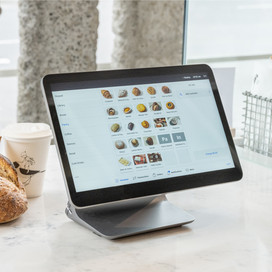Table of contents
Sometimes the best ideas are born from challenging situations. During the pandemic, it’s been inspiring to see businesses pivot and new ones come to life. If you’ve decided it’s time to start your business, we’ve got you. This step-by-step guide is intended to help you set up a business from home.
Develop your business idea
Ensure market demand meets your contribution
Have you identified a gap in the market you can fill? Or is there something you’re extremely passionate about and want to share with the world? Either is a great reason to open a business. When developing your business idea, it’s important to understand what unique strengths and skills you have and what the market will pay you to do. The concept of ‘Ikigai’, is a useful tool to help you define your business’s ‘reason for being’.
Product or service – or both?
A product is a tangible good that can be consumed, so elements like manufacturing, warehousing and shipping need to be considered. Services on the other hand, like consulting, require relationship building and frameworks for knowledge sharing. Combination businesses, like restaurants, need to manage both tangible and intangible components, for example food and customer management.
Business models differ significantly depending on whether you want to offer a product or service, or a combination of both. When considering small businesses ideas from home, it’s important to identify which direction you want to go in.
Identify your customer
Your ability to clearly define the customers who will buy your offering is essential to your success. Here’s a series of questions to answer to find clarity about exactly who will purchase your product or service:
- Define your product: How would your customer explain your product or service in their own words?
- Define the opportunity for your business: What problem does your business help your customer solve?
- Define the demographic of your customer. For example:
- Where is your customer located?
- How old are they?
- What’s their gender identity?
- What do they do for work?
- What’s their income?
- Understand your customer’s behaviour. For example:
- How does your customer make purchase decisions?
- Who is influential in their lives?
- What worries them?
- What excites them?
Run a competitive analysis
Before you start a business it’s important to understand who else is doing what you’re doing, by developing a competitive analysis. Look at other brands online and read their product reviews. Better yet, pretend you are your customer and purchase that product or service. For instance, if you want to make and sell candles or soaps, buy some from another brand! Or if you want to offer your gardening expertise, hire a gardener. Here’s what to look for when assessing your competition:
- What’s the price of the product or service?
- What’s the quality of the product of service?
- What are the key benefits that are communicated?
- What was the experience of interacting with the product or service? How did the business meet your expectations?
- What customer is the business appealing to and where is their focus location?
Answers to these questions will help you build your business model and marketing plan.
Articulate your unique selling proposition
When you know what other businesses are out there, you can see how you differ – and what you want to highlight that you do differently. This is called your unique selling proposition (USP) – and it’s all about what you can do better than anyone else. You should be able to sum up this proposition in a short sentence. For example, FedEx’s original USP was ‘When it absolutely, positively has to get there overnight’ – highlighting a problem that can be solved with their product. Another example from Tiffany & Co. is their campaign ‘The right one is worth waiting for’, communicating romance and desirability as their USP.
This deceivingly simple exercise requires time and attention. Your USP is why people will want to buy from you, work for you and invest in you, and is the basis for your elevator pitch.
Build your business model
Your business model is your ‘How’, or your plan for making money. It identifies the key sources of revenue by selling your product or service to your intended customer. Your model also identifies your funding streams and your suppliers, and other stakeholders, in your business. The Business Model Canvas is a popular tool for mapping out these elements.
Pricing your goods and services is an important consideration when building your business model. There are three ways businesses typically price their product:
- Competition-led: Where do you want to sit alongside your competitors?
- Cost-led: How much does it cost to produce your product or service?
- Value-led: What is the price your customer is willing to pay for your product?
Your pricing model is a determining factor of your expenses and revenue for operating over time.
Register your business
Once you’re confident about your ability to make money through your business, it’s time to make it official! There are three steps to registering a business in Australia:
- Claim your business name: Make sure it’s memorable and desirable for your customer, and that no one else already has it!
- Choose your legal business structure: From ‘sole trader’ to ‘company’, different business structures come with varying benefits and obligations.
- Get an Australian Business Number (ABN): This is a unique identifier for the tax office and business community, and allows you to start trading.
To find out more on these steps, check out our guide to register your business as a name and entity legally in Australia. You can also learn about ABNs in our handy Australian Business Numbers guide.
Develop your marketing strategy
In order to market your home business effectively, you’ll need to plan your marketing strategy with the following steps:
- Establish your goals
- Identify your target market
- Conduct a competitive analysis
- Articulate your USP (unique selling proposition)
- Develop your pricing strategy
- Choose your marketing channels
- Plan your marketing budget
For a deep dive on how to build a marketing plan for your business through these steps – check out our 101 marketing guide for your business.
Set up your software stack
Once your business is official you can launch your website and any supporting infrastructure.
Firstly, you’ll need a domain provider. It’s common practice to purchase domains that are the same and similar to your business name so that other people and companies don’t use your name too (knowingly or unknowingly).
You’ll also need to find a hosting platform for your website. If you want to accept payments through your website, you can find ecommerce platforms, such as Square Online Store that include payment processing, or integrate with payment platforms. When deciding on a website host, consider:
a) How easy it is to build using their templates to reduce design and development costs and
b) its ability to integrate with other applications[1], like accounting software, so all of your systems ‘speak to each other’.
Prepare your payment system
Beyond accepting cash, accepting card payments offers convenience for your customers and means you’re more likely to get paid the right amount straight away.
There are a number of ways that you can accept payments for your business from home:
- Set up your online store with Square Online Store to accept payments on your website
- Use your computer to take credit card payments over the phone with Square Virtual Terminal
- Easily create and send estimates and invoices from the free Square Invoices app
- Set up easy checkout links to help your start accepting payments online with Square Online Checkout
For when you’re able to trade in person, Square Reader allows you to accept payments from contactless cards, contactless devices and chip cards.
So now you know how to open a business from home! But setting up a business is just the beginning. Promoting and operating your business to be a successful enterprise requires ongoing work (and in the current climate, it requires flexibility!). Follow along on Town Square for more about how to successfully market a business and how to run a business over time, or find out more about payment processing options with Square.
[1] Square AU Pty Ltd ABN 38 167 106 176, AFSL 513929. Square’s AFSL applies to some of Square AU’s products and services but not others. Please read and consider the relevant T & C’s, Financial Services Guide and PDS before using Square’s products and services to consider if they are right for you.
![]()











